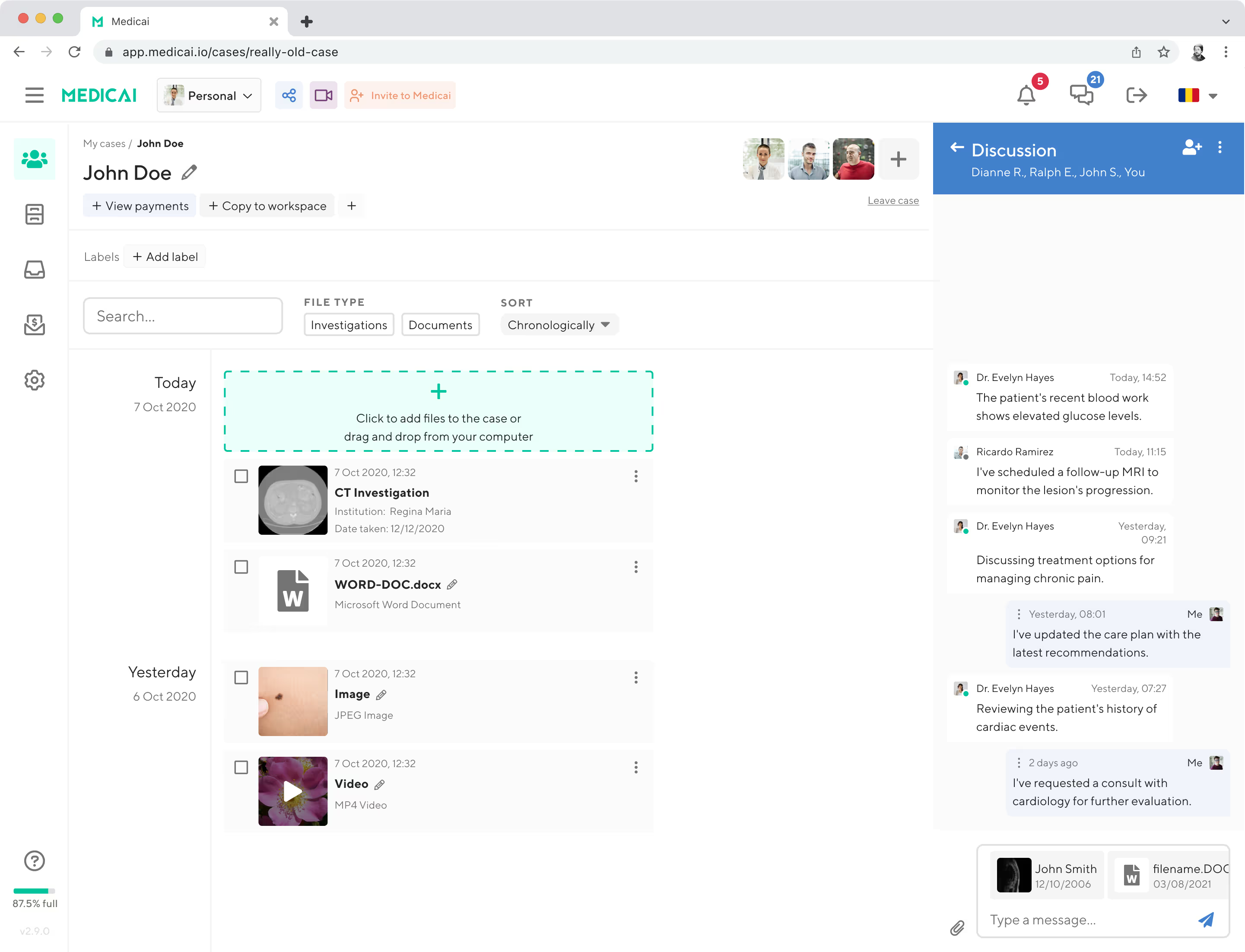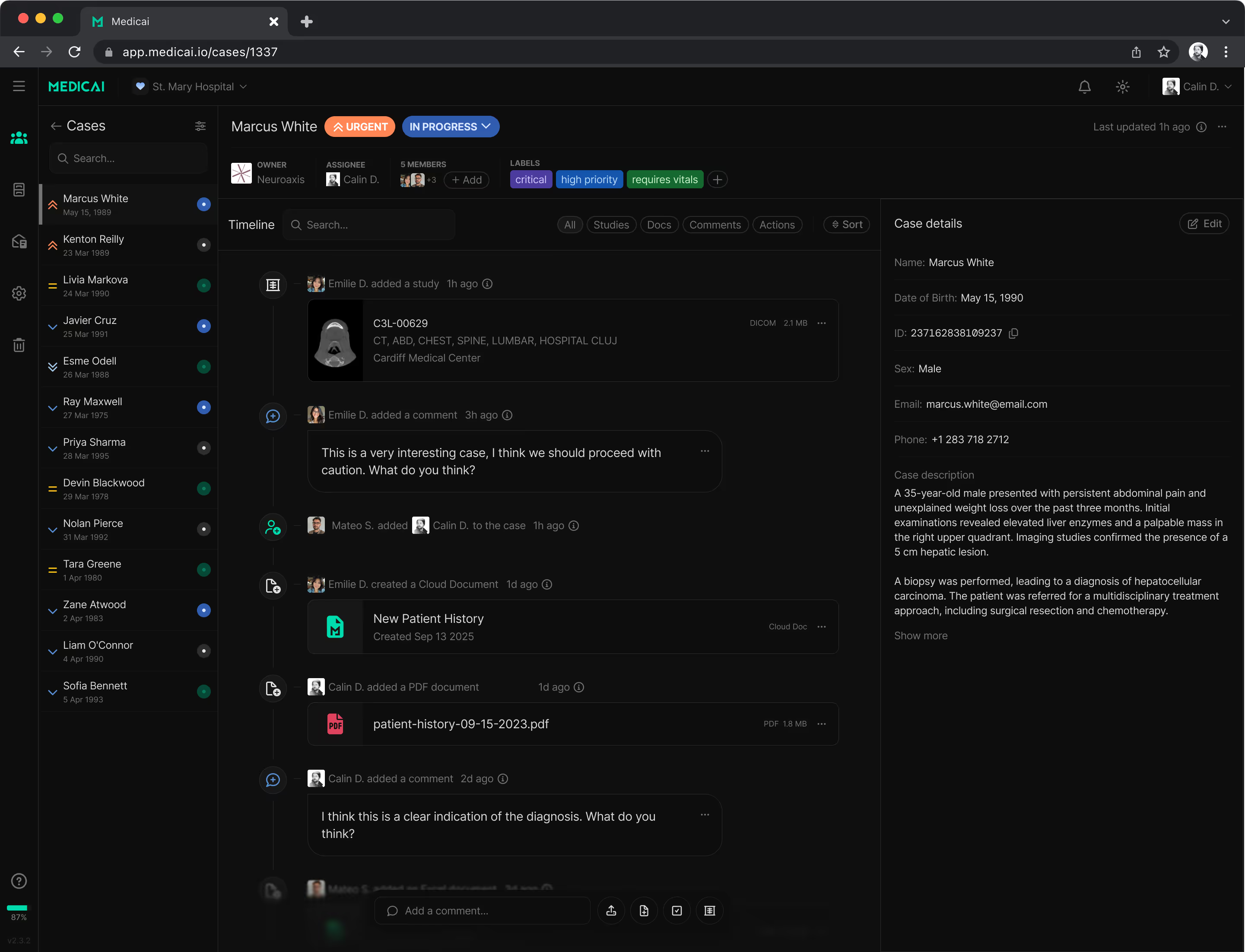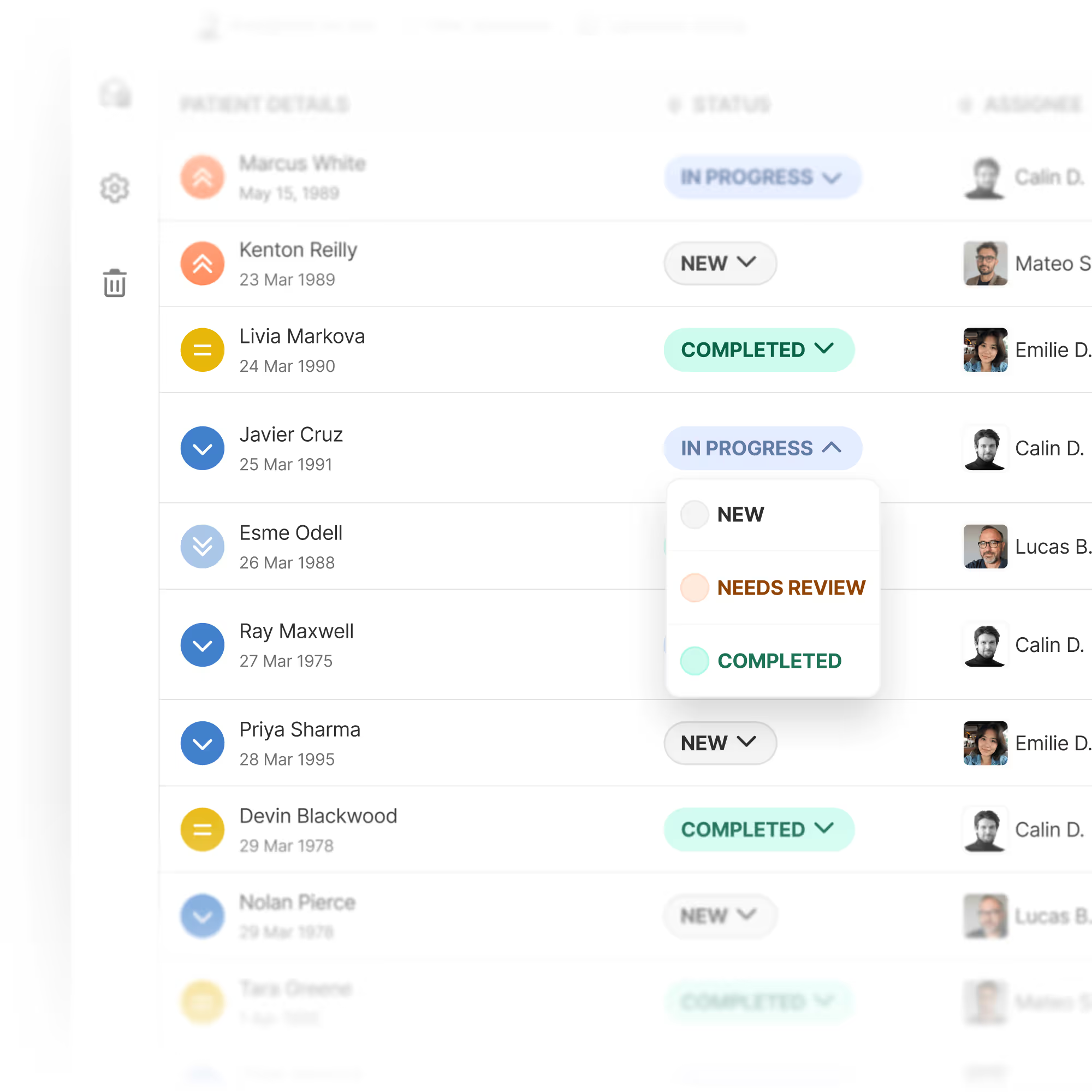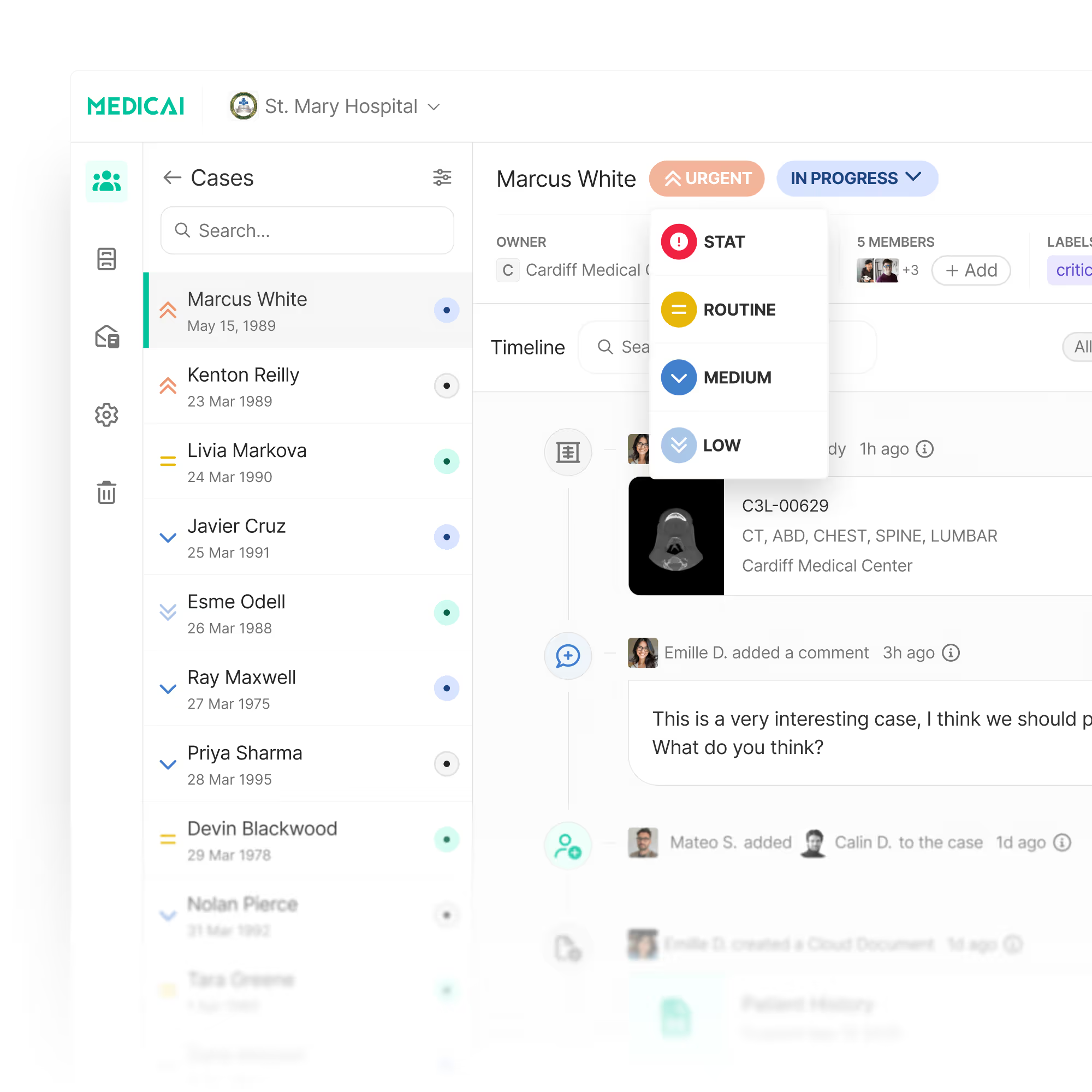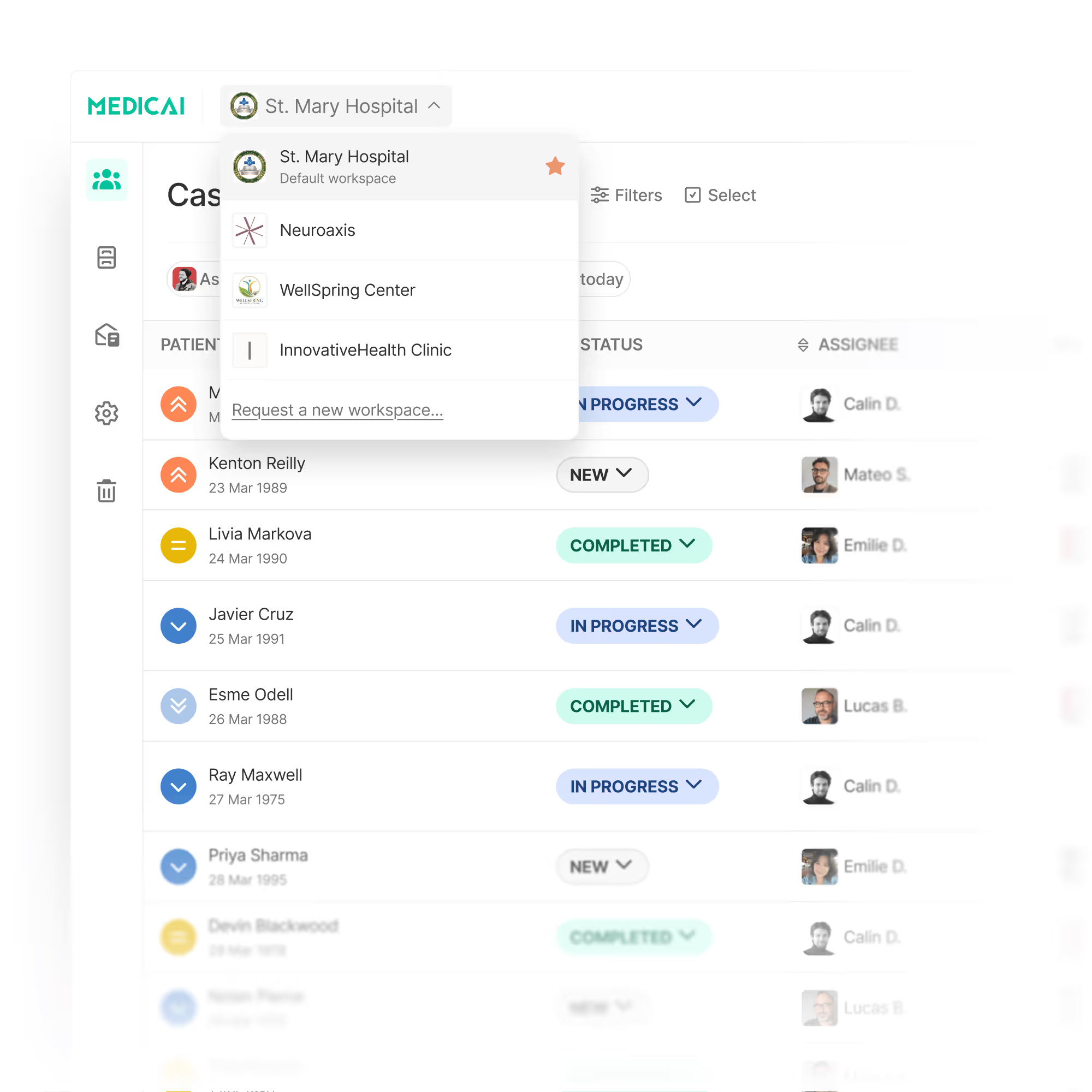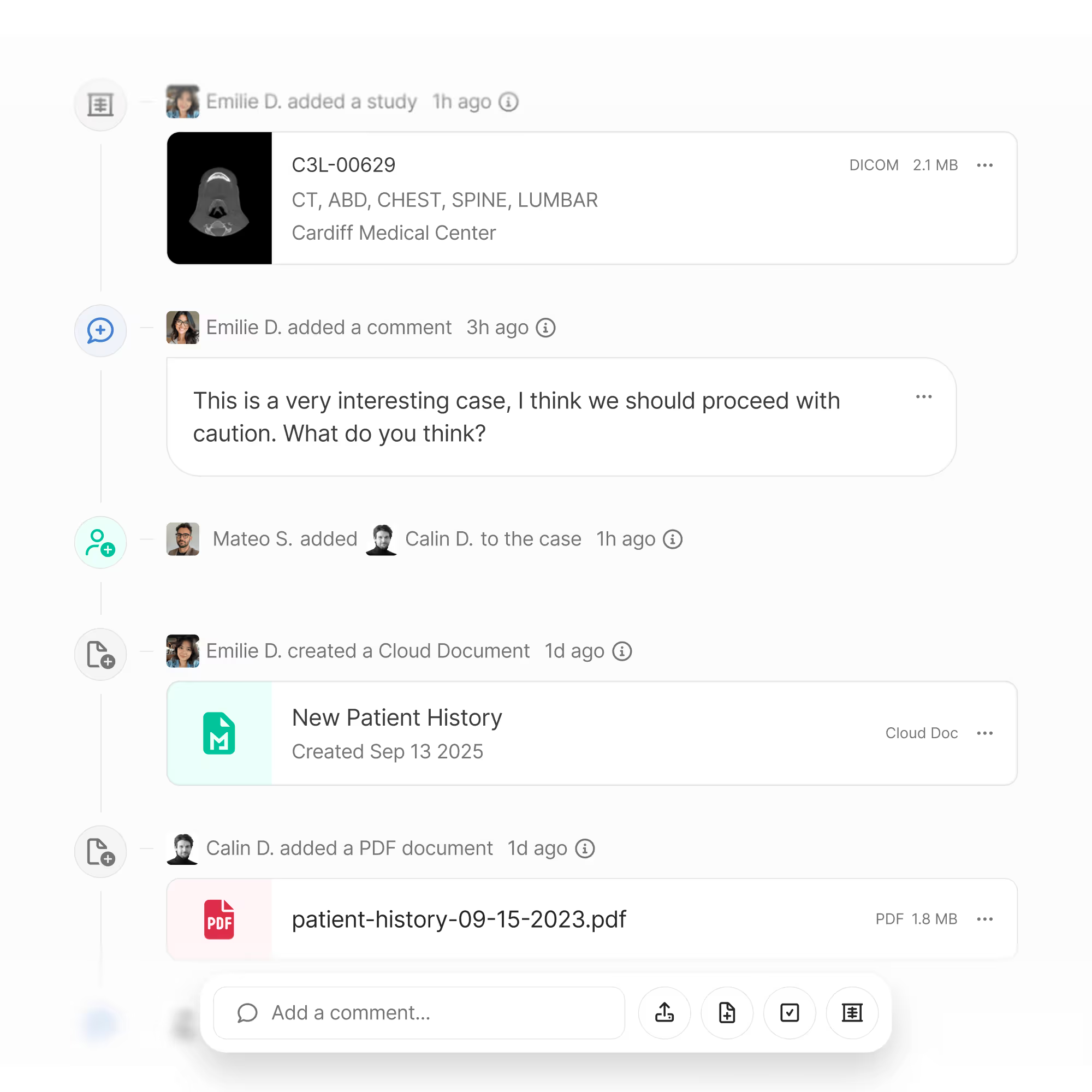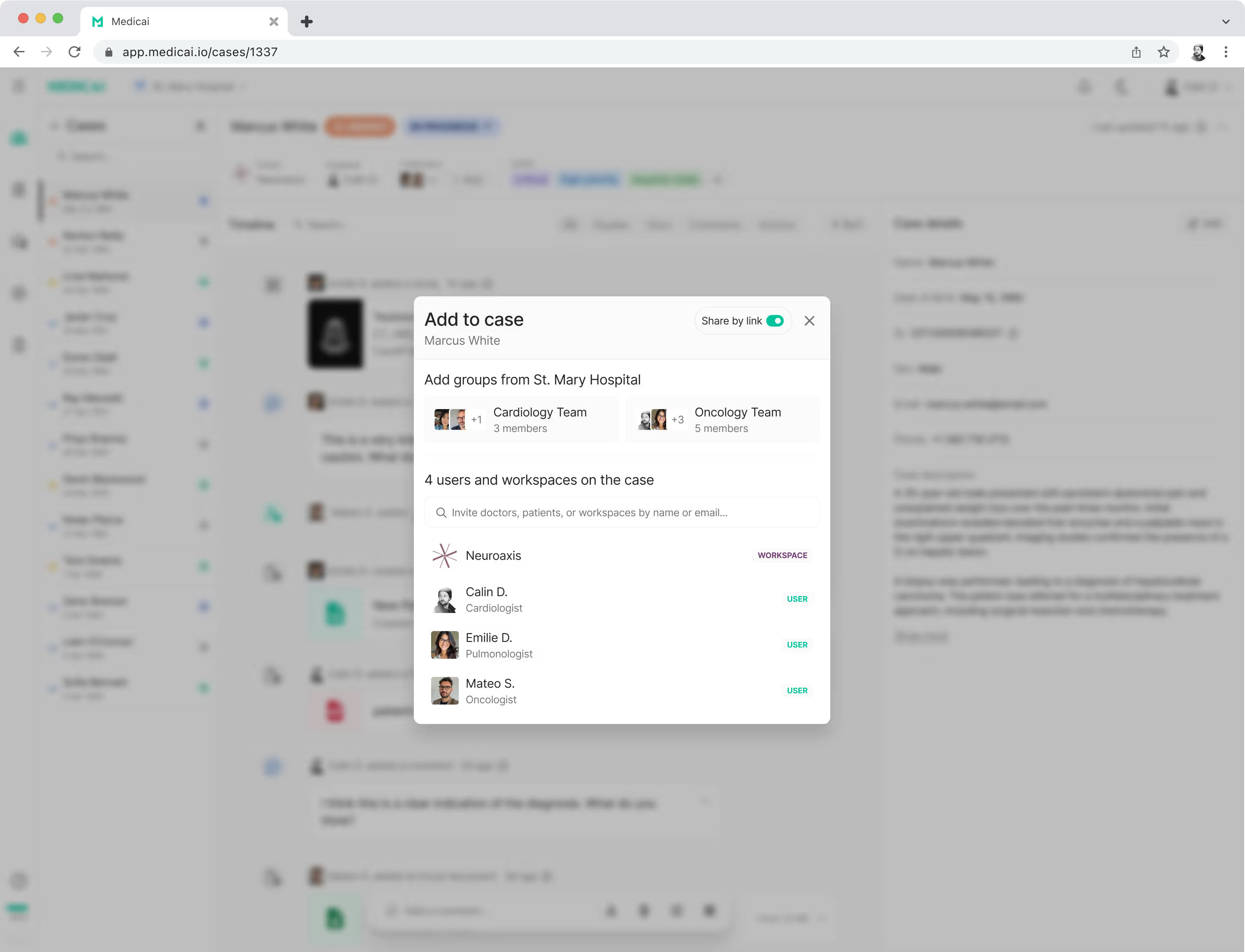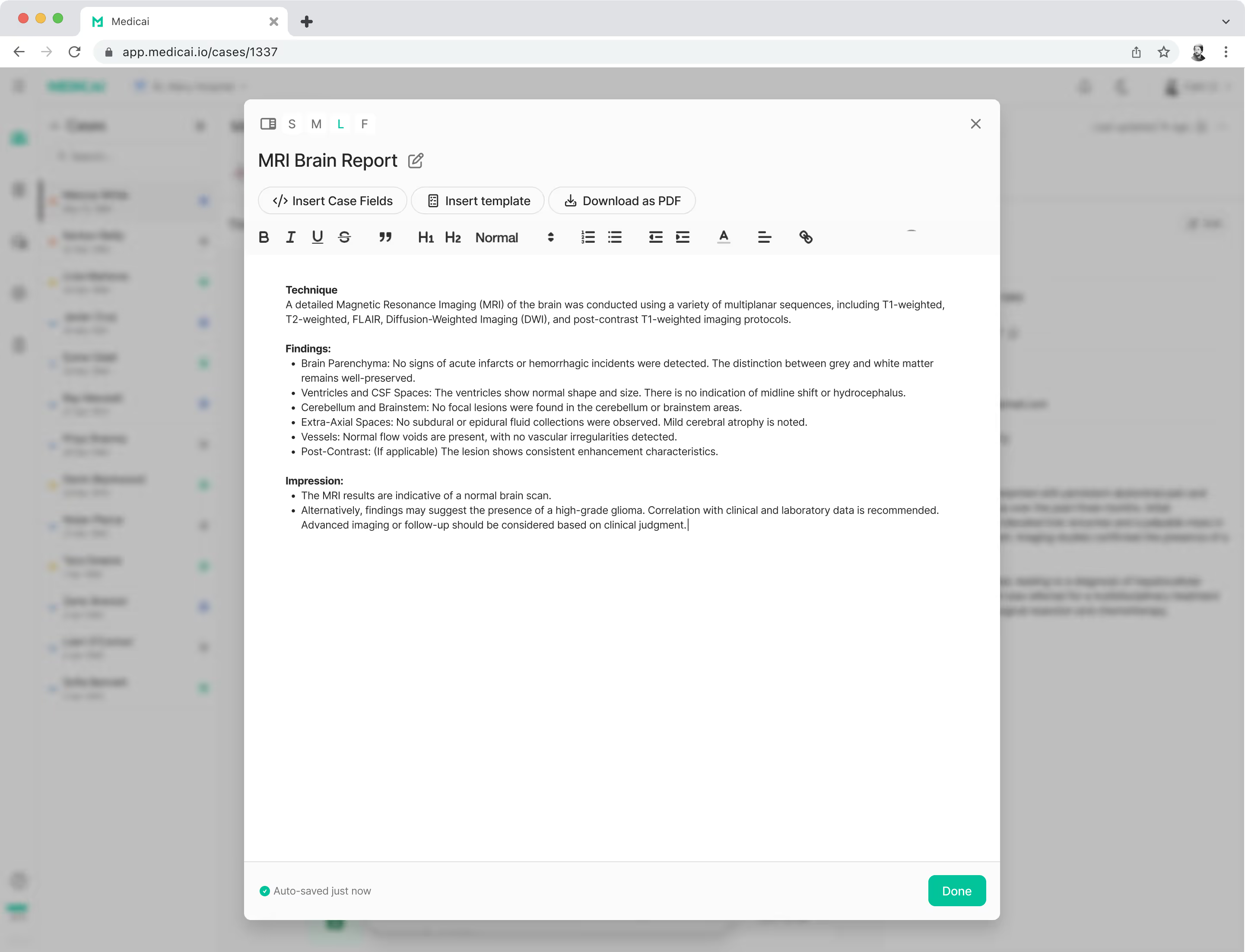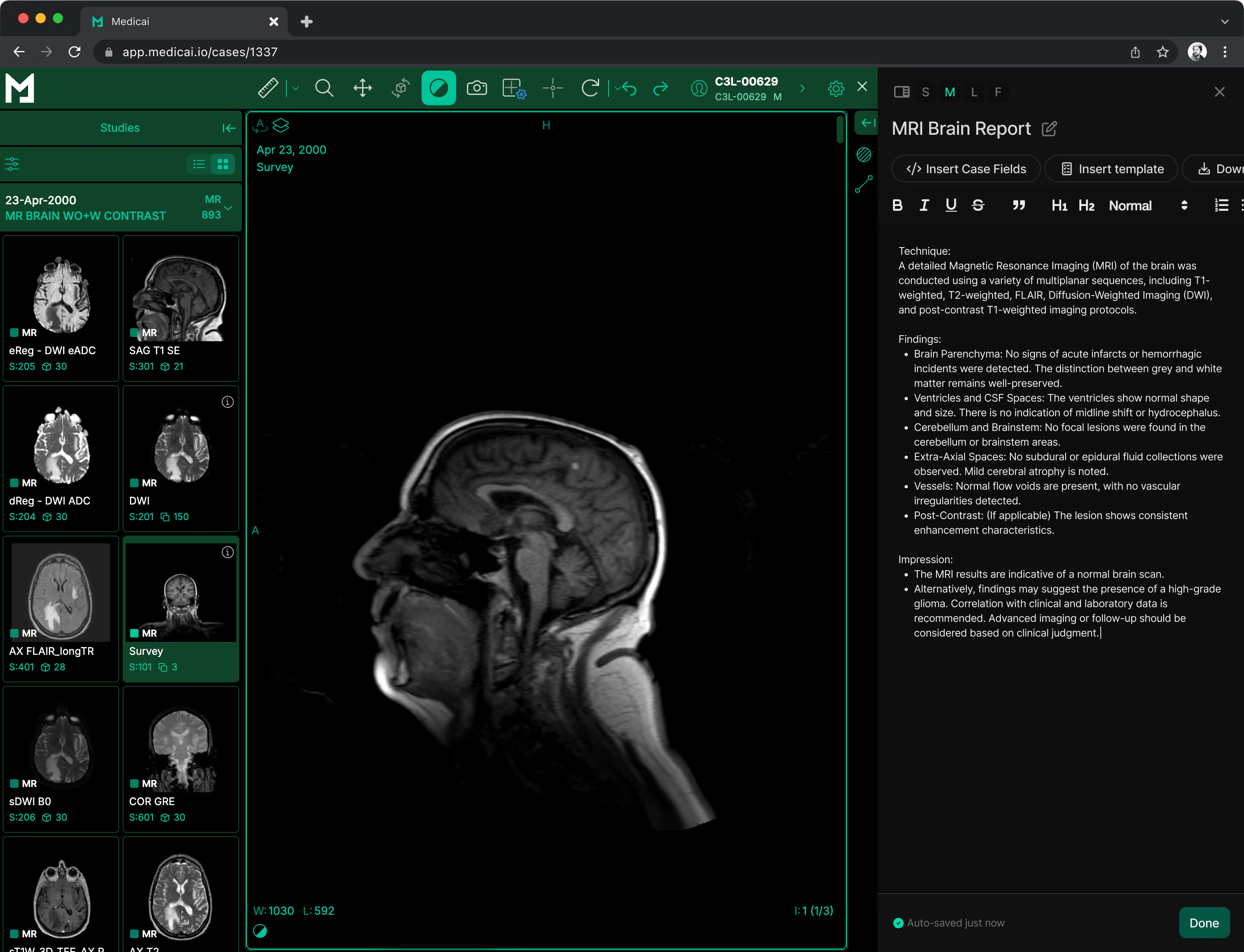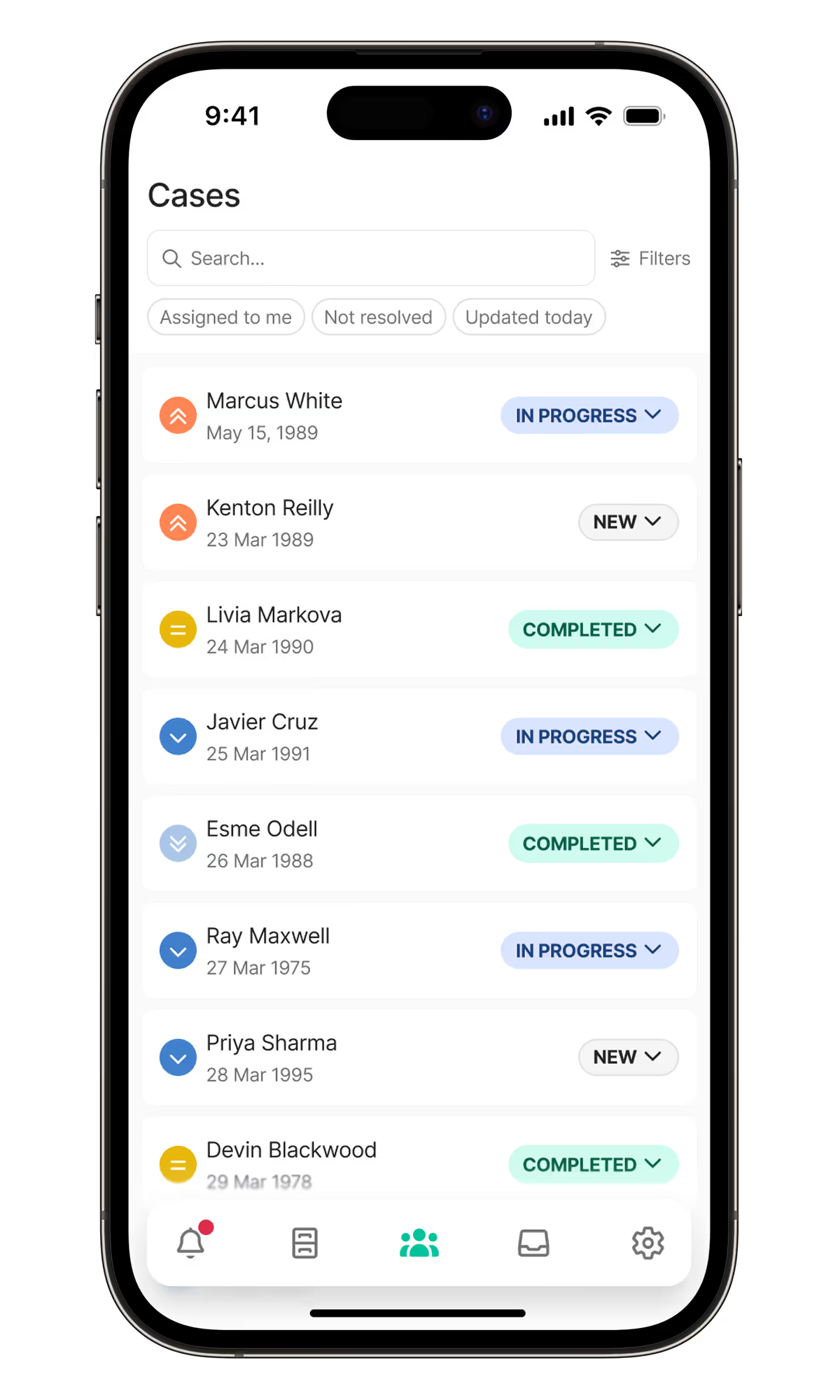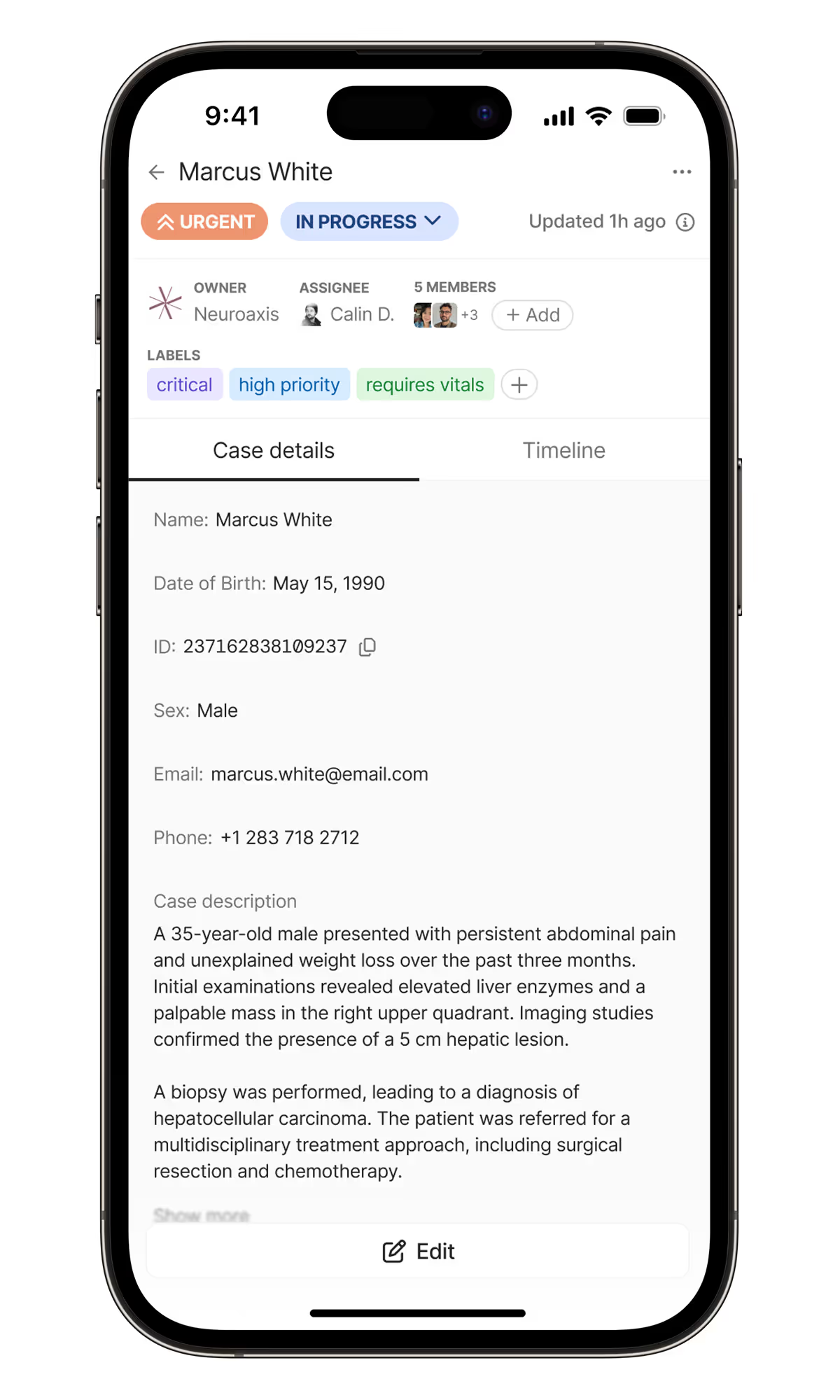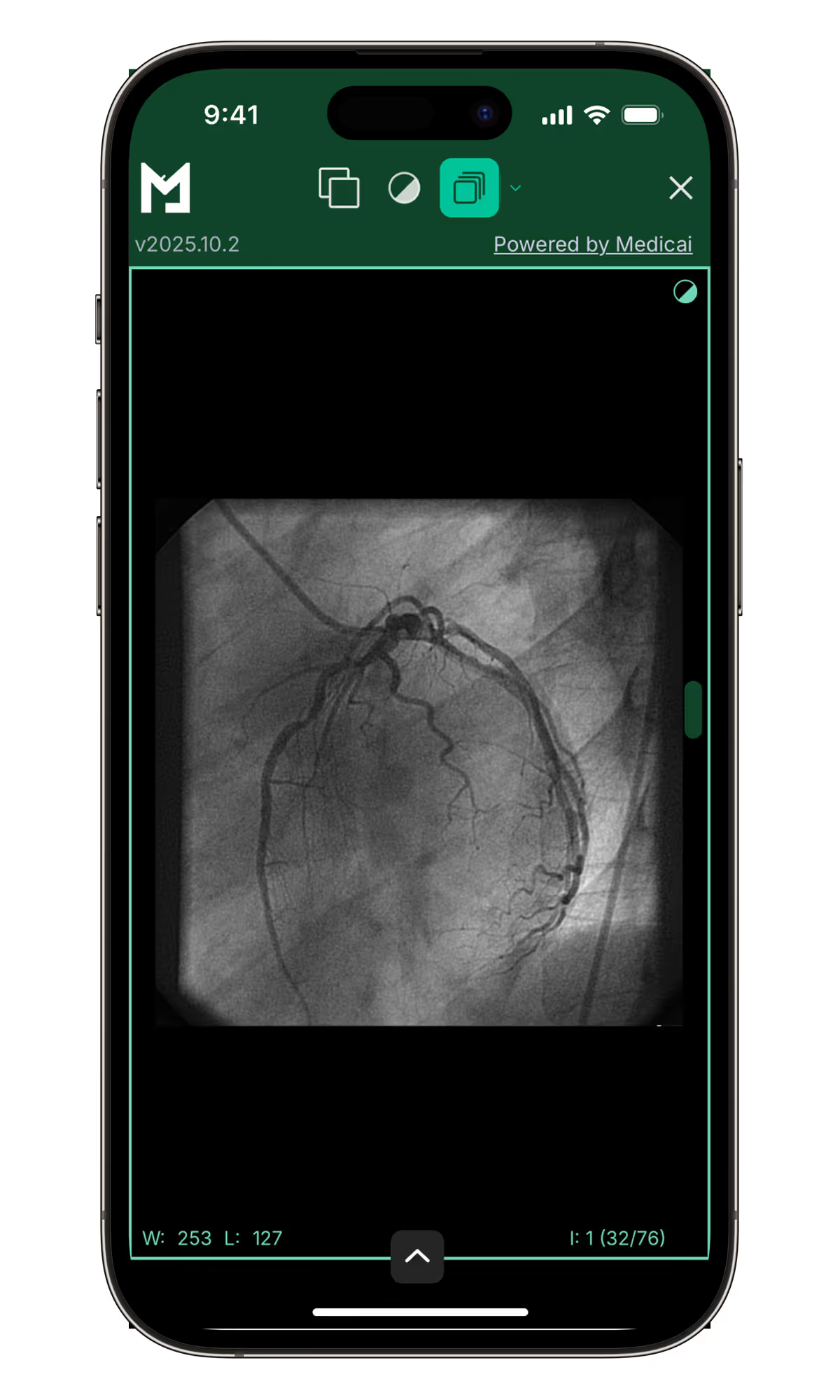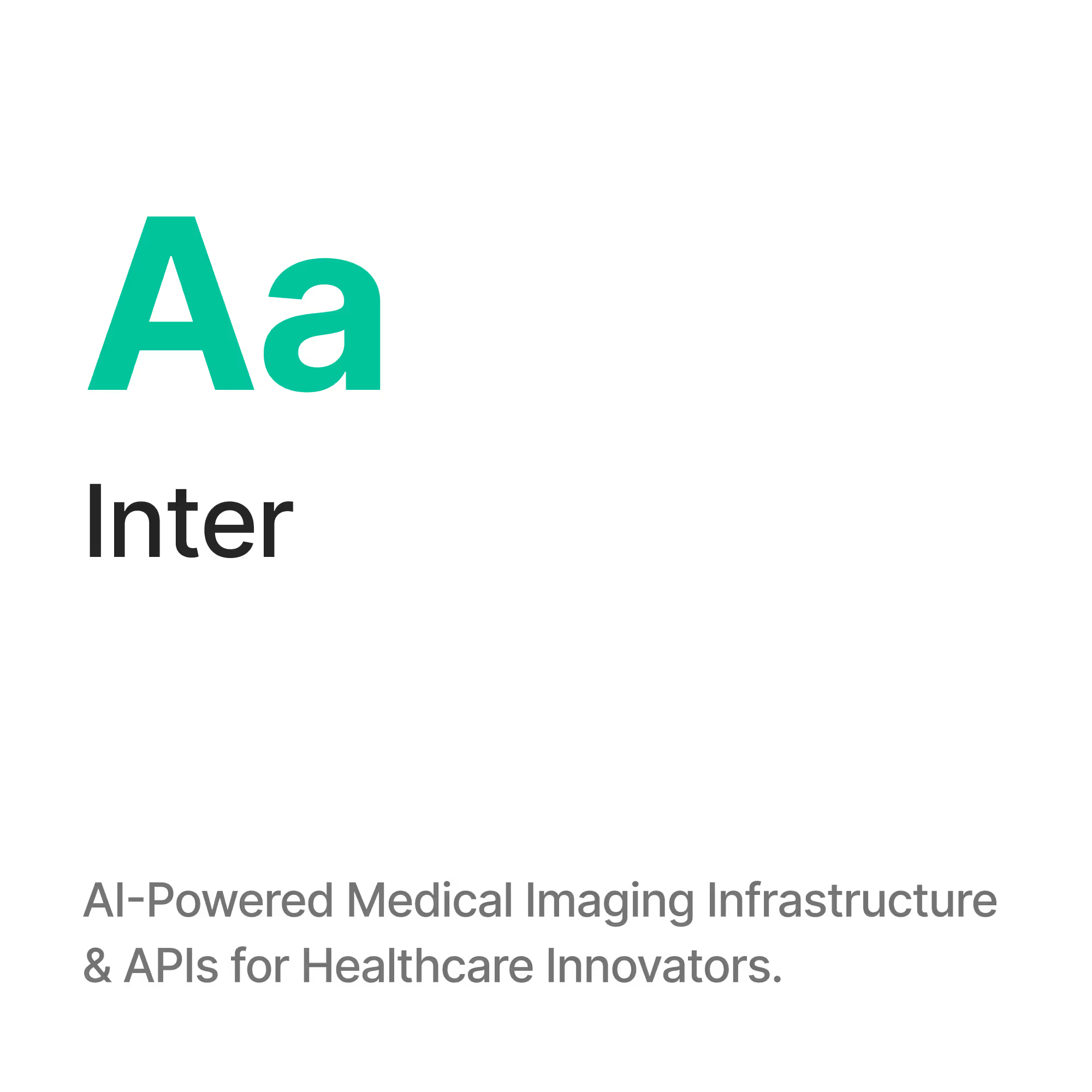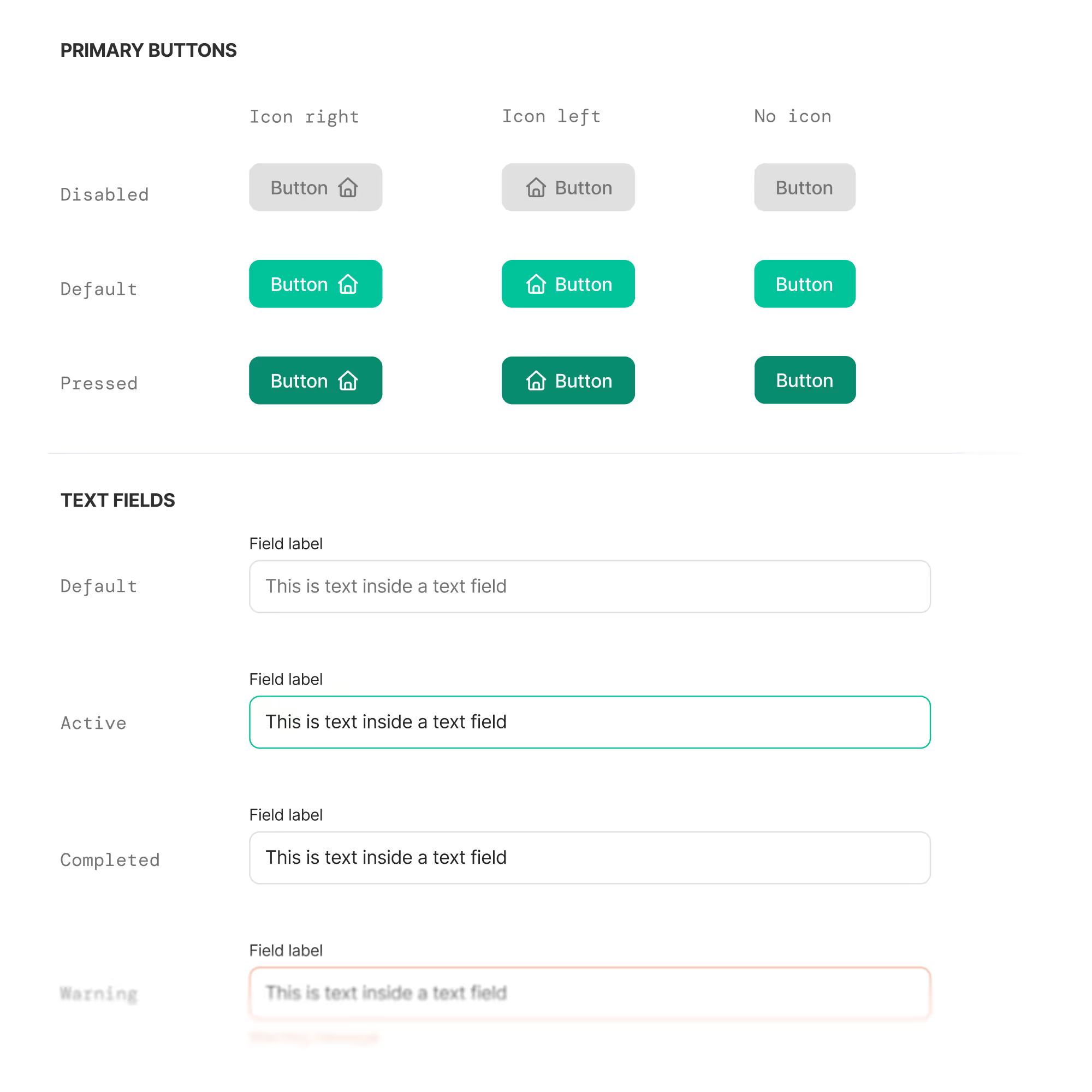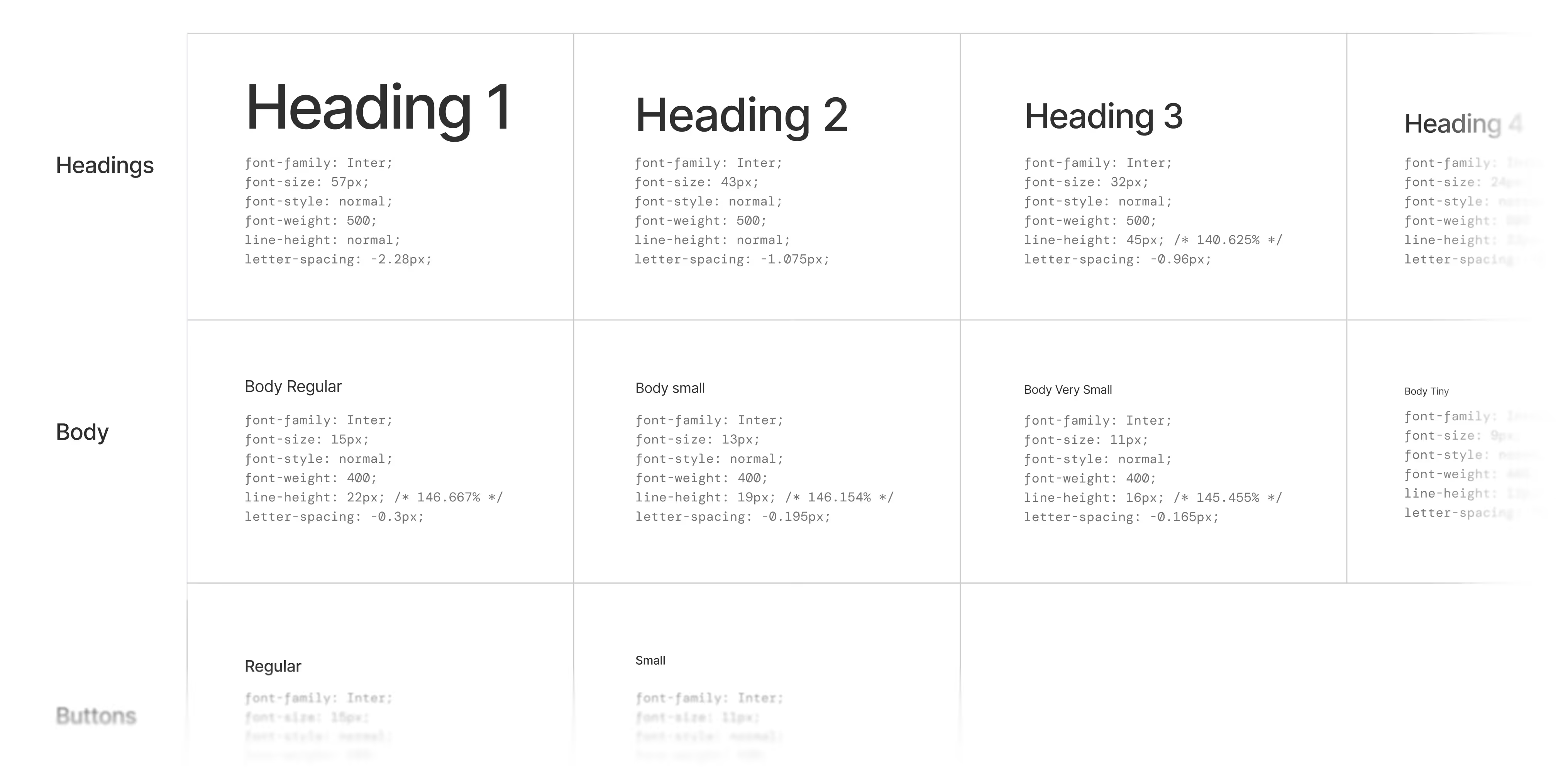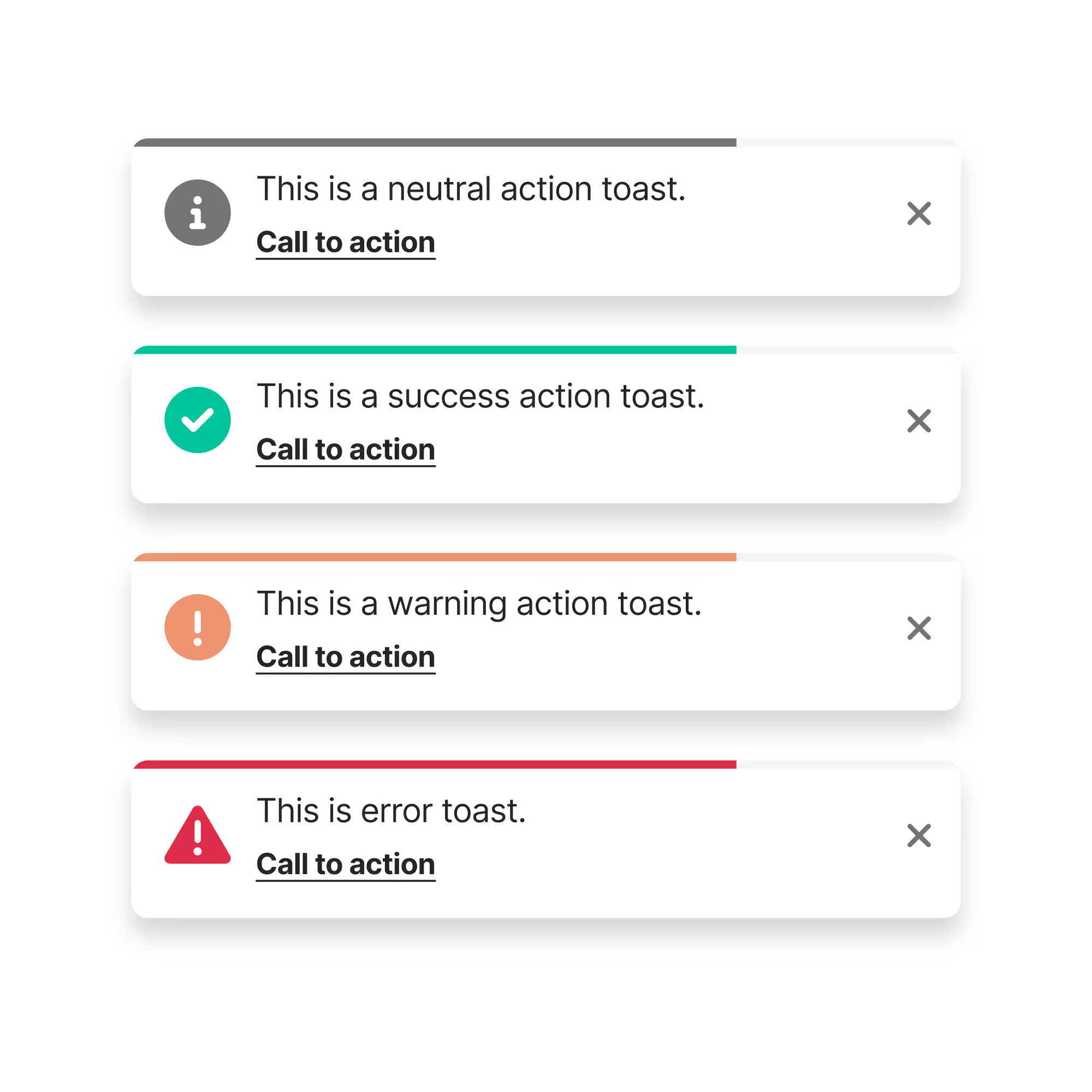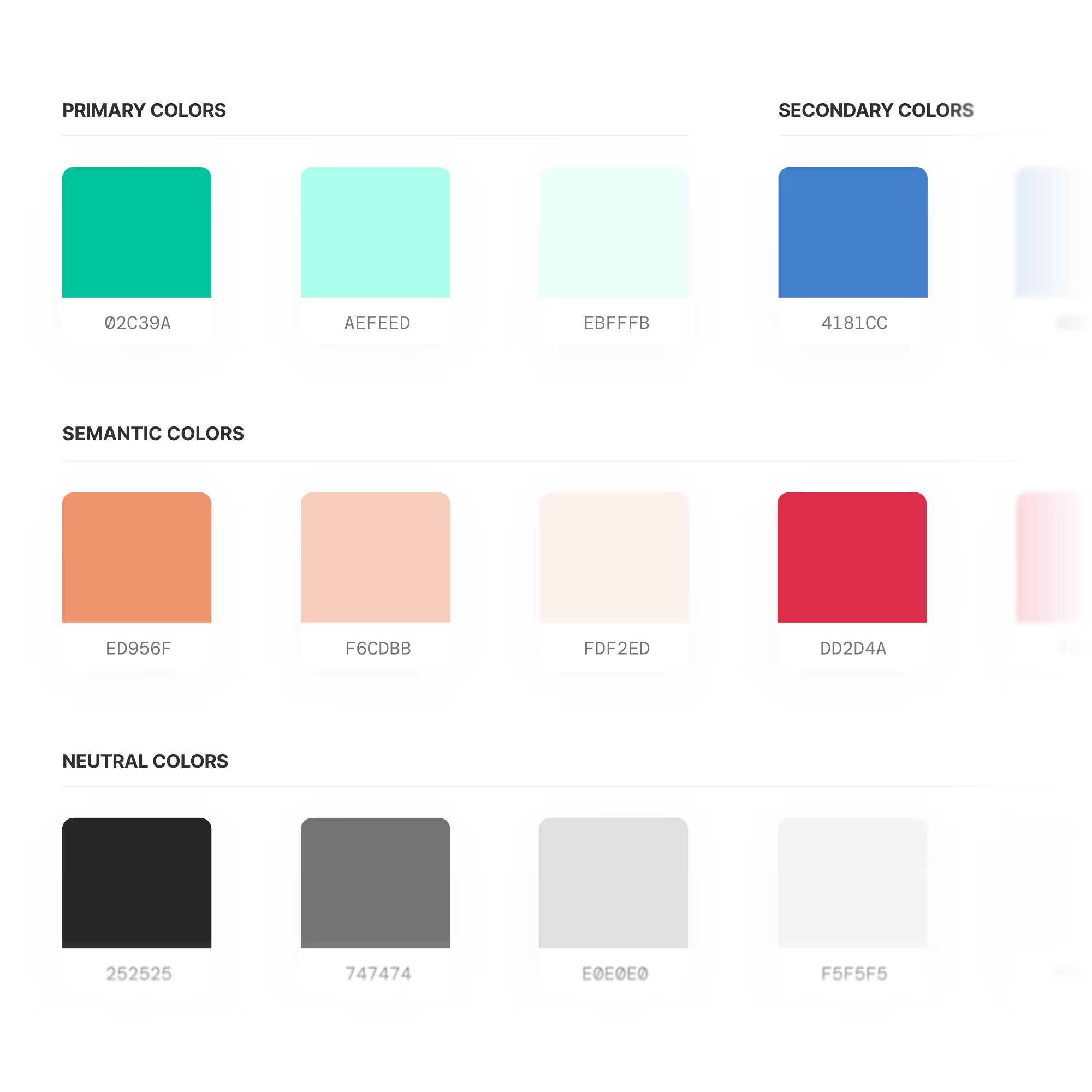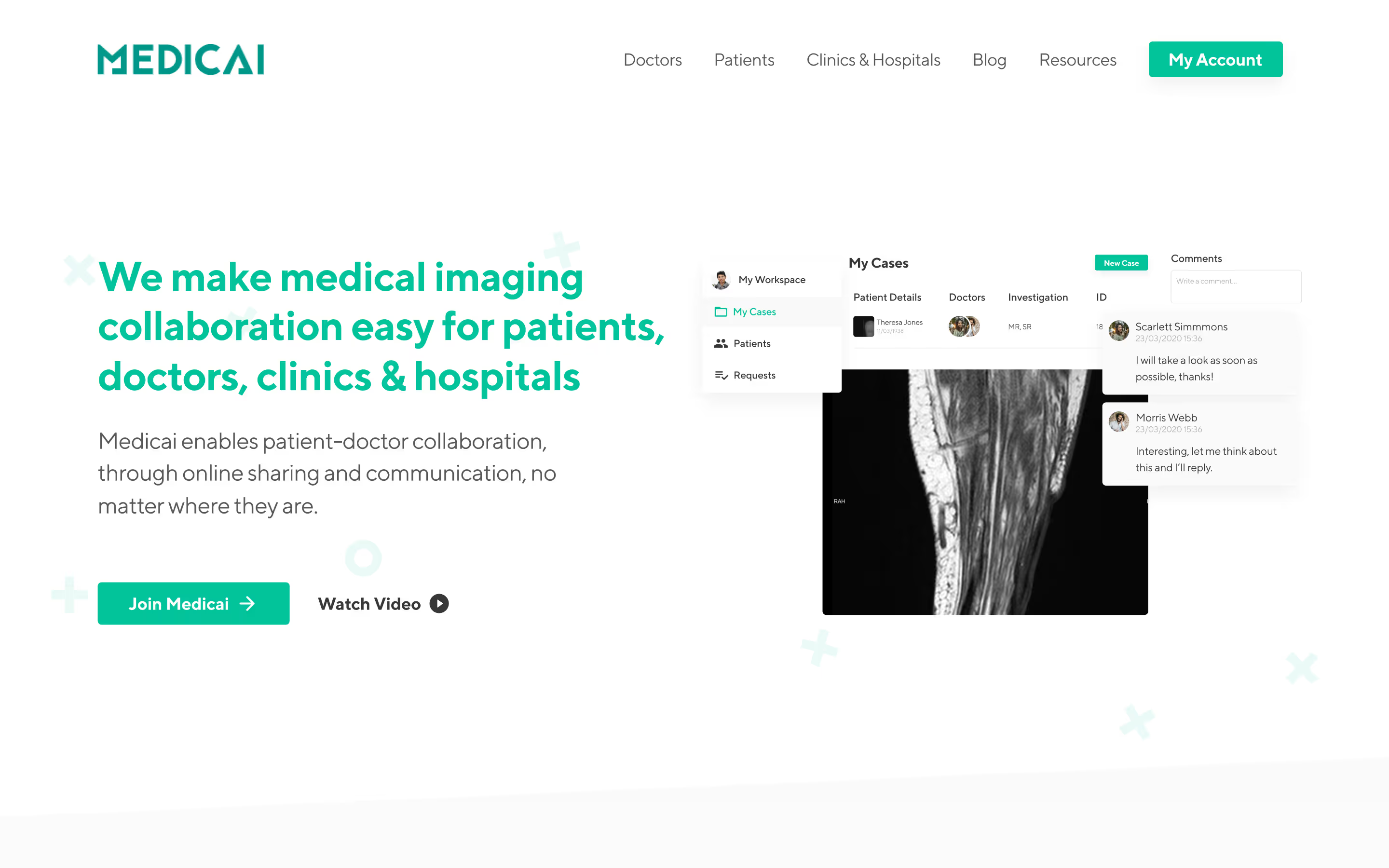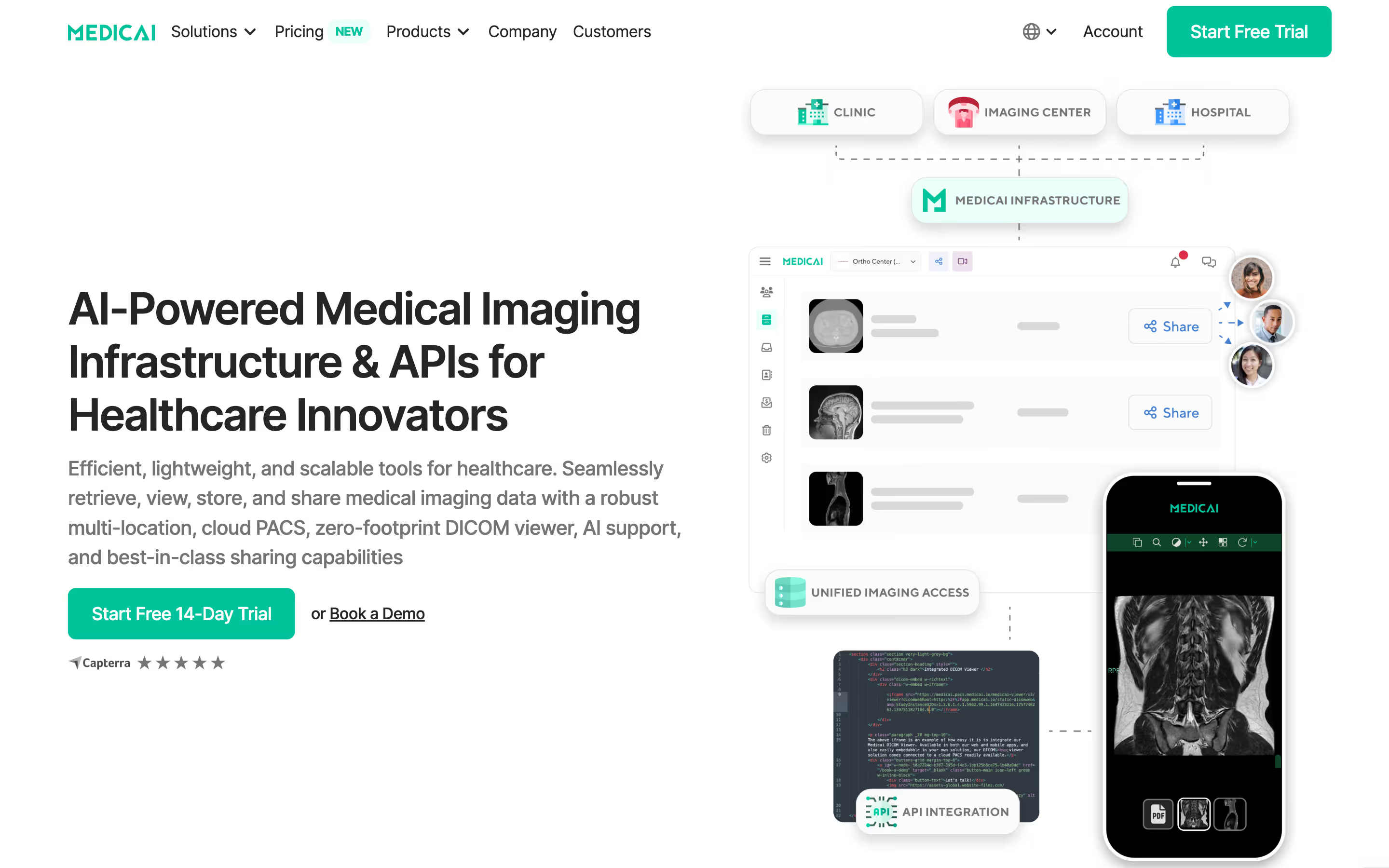Summary
My Role
LEAD PRODUCT DESIGNER
WEB APP, MOBILE APP, WEBSITE
2020 - PRESENT
As the lead product designer starting in 2020, I owned end-to-end product design across the web app, mobile app, and marketing website. My work spanned initial research, defining system behavior, structuring complex workflows, and collaborating closely with engineering on implementation.
This included running research with clinicians and radiologists, creating the design system, and designing high-stakes multi-role workflows for medical imaging, collaboration, permissions, and data sharing. I also designed and built the marketing site in Webflow, which now serves over 80k monthly users.
Medicai became my primary focus at Atta Systems as we scaled it from MVP to an enterprise-grade product used across 70+ healthcare organizations.
The Problem
Healthcare providers relied on legacy imaging systems that offered very limited support for remote or distributed work. Even during COVID-19, many clinicians were still using CDs to share imaging files.
Doctors needed fast and dependable access to large studies from any device, with strict HIPAA compliance requirements and no tolerance for failure.
